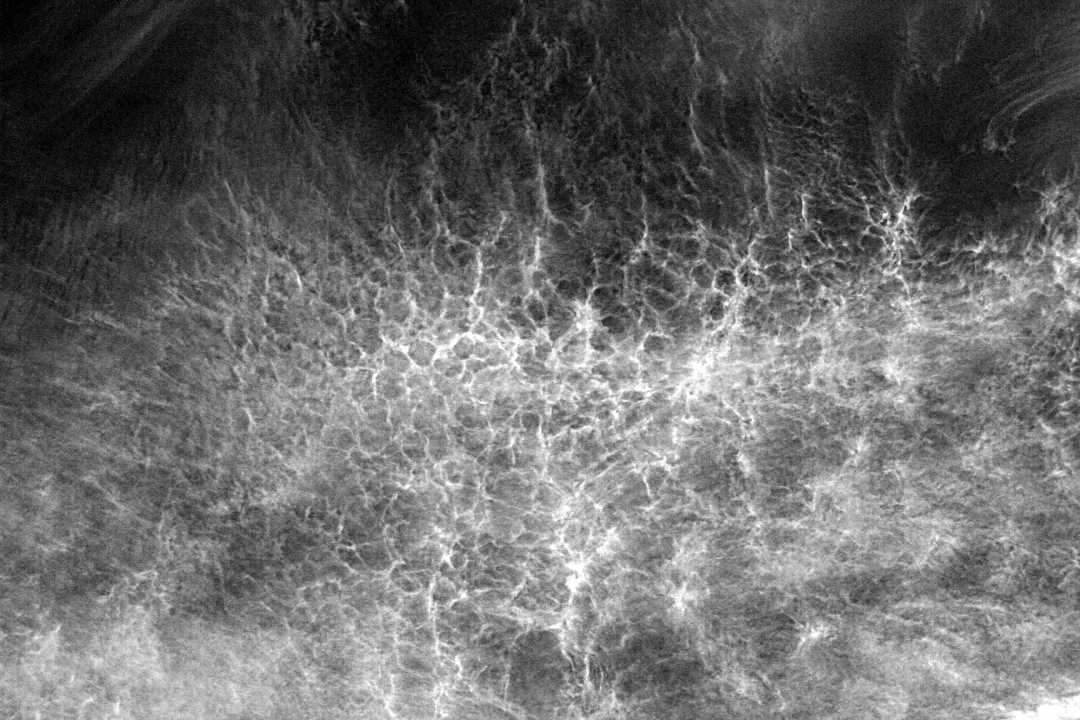Wavewatcher’s Abstracts
Forums › The Cloud Forum › Wavewatcher’s Abstracts
- This topic has 5 replies, 4 voices, and was last updated 8 years, 4 months ago by
 Patricia L Keelin.
Patricia L Keelin.
-
AuthorPosts
-
-
July 9, 2017 at 11:09 pm #220221
Howard Brown
ParticipantI was sent a Buxin landscape card then found
http://buxin.com/portfolio.php?galerie=Vues sur Mer[ N.B. the link typed above does not appear all red on the forum hence does not work. Try buxin.com, select Portfolio then Vues sur Mer. ]
These Vues struck me as similar to the cloud abstracts in the Black & White threads. Any companion Vues for this thread?
-
July 10, 2017 at 4:41 pm #220328
 Hans StockerParticipant
Hans StockerParticipantIndeed Hygge, the similarity of these Vues Sur Mer with some cloud abstracts in B&W are striking. Water, vapour, waves, they have a lot of physical processes and appearances in common. Thanks for sharing this link.
-
July 10, 2017 at 5:08 pm #220331
 Patricia L KeelinParticipant
Patricia L KeelinParticipantThanks, Hygge! Similar indeed – and much appreciated. Is there an aquatic descriptive for the type of lacunosus quality depicted in several of Buxin’s Vues sur Mer images? While I don’t have many cloud photos that capture that particular look, here’s one I think comes closest.

There’s also the CAS forum topic “Wave Clouds”, which Michael Lerch launched in October 2016. It is also devoted to B&W images. It’s slipped onto page two at the moment, but like the tide, I have a feeling it will be back.
-
July 12, 2017 at 12:10 pm #220720
 Gavin Pretor-PinneyKeymaster
Gavin Pretor-PinneyKeymasterHere is the link that you needed to include for the wave images:
http://buxin.com/portfolio.php?galerie=Vues%20sur%20MerThese patterns of sea foam do, in some instances, look remarkably like lacunosus clouds. Of course, the reason the foam from waves looks white is the same reason clouds look white. The countless tiny bubbles of water scatter the sunlight in all directions, just as airborne droplets and ice crystals do. The random scattering of light like this appears to us as white, with a the degree of opacity depending on how much scattering is happening.
In the case of lacunosus clouds, I understand that the network of cloud holes, which can look like a honeycomb, results from convection cells forming beneath an inversion. This leads to pockets of sinking air, which is where the holes appear, with rising air between, which results in the fringes of cloud. It is a pattern that emerges from the laws of physics in certain atmospheric conditions. No doubt, there is some equivalent explanation for why the sea-foam bubbles on the turbulent surface of ocean waves results in a similar, if far more fleeting, pattern of a fringes and holes. I guess it is likely to be more to do with water bubbles than the waves themselves.
-
July 12, 2017 at 2:24 pm #220731
 Hans StockerParticipant
Hans StockerParticipantThank you for this explanation Gavin.
I can’t resist the temptation to support the story with this picture of lacunosus in black and white.

-
July 13, 2017 at 10:08 pm #220923
 Patricia L KeelinParticipant
Patricia L KeelinParticipantThank you, Gavin! The better the understanding, the deeper the appreciation for all the wonderment above.
And Hans, beautiful lacy lacunosus you’ve captured there!
-
-
AuthorPosts
- You must be logged in to reply to this topic.




